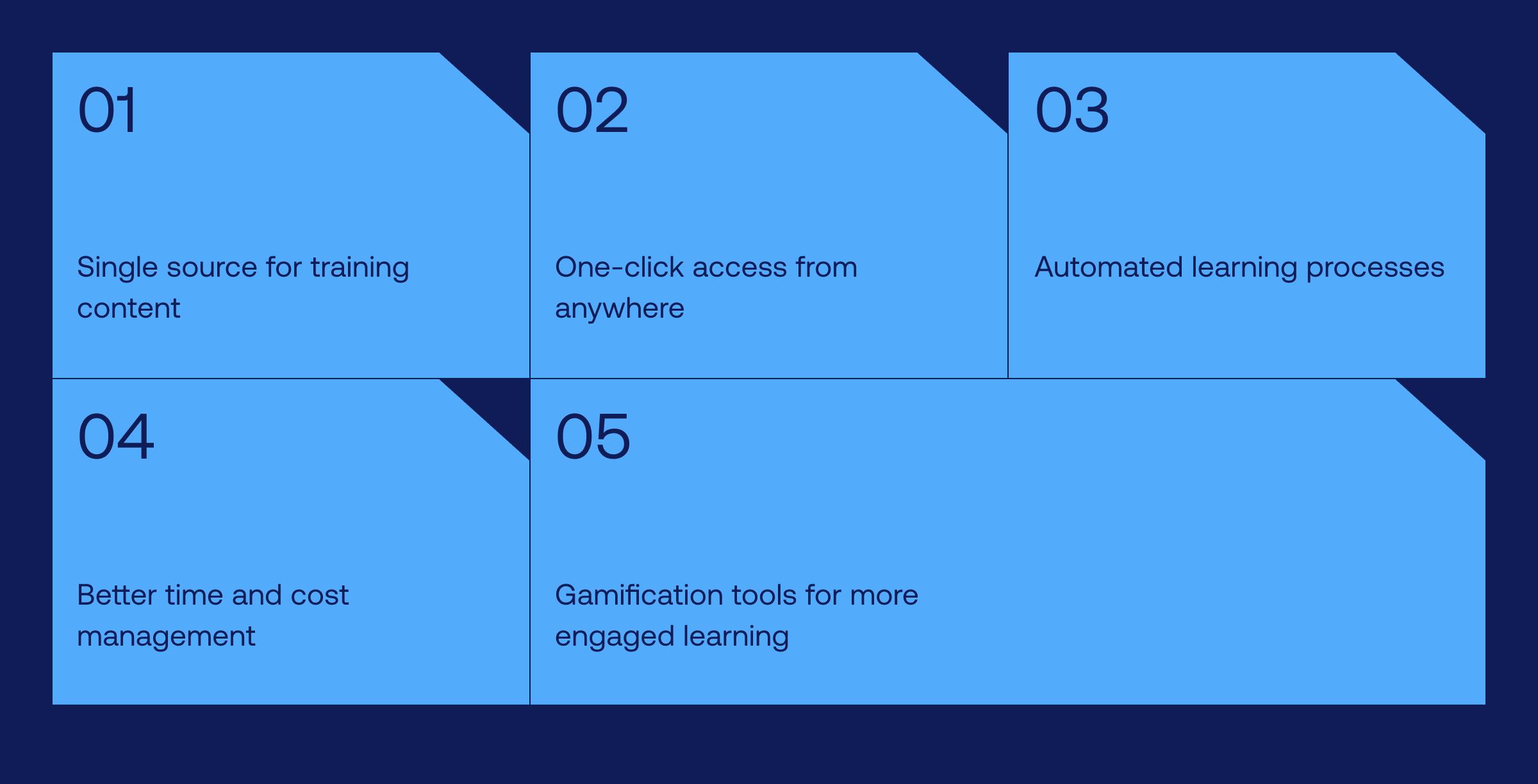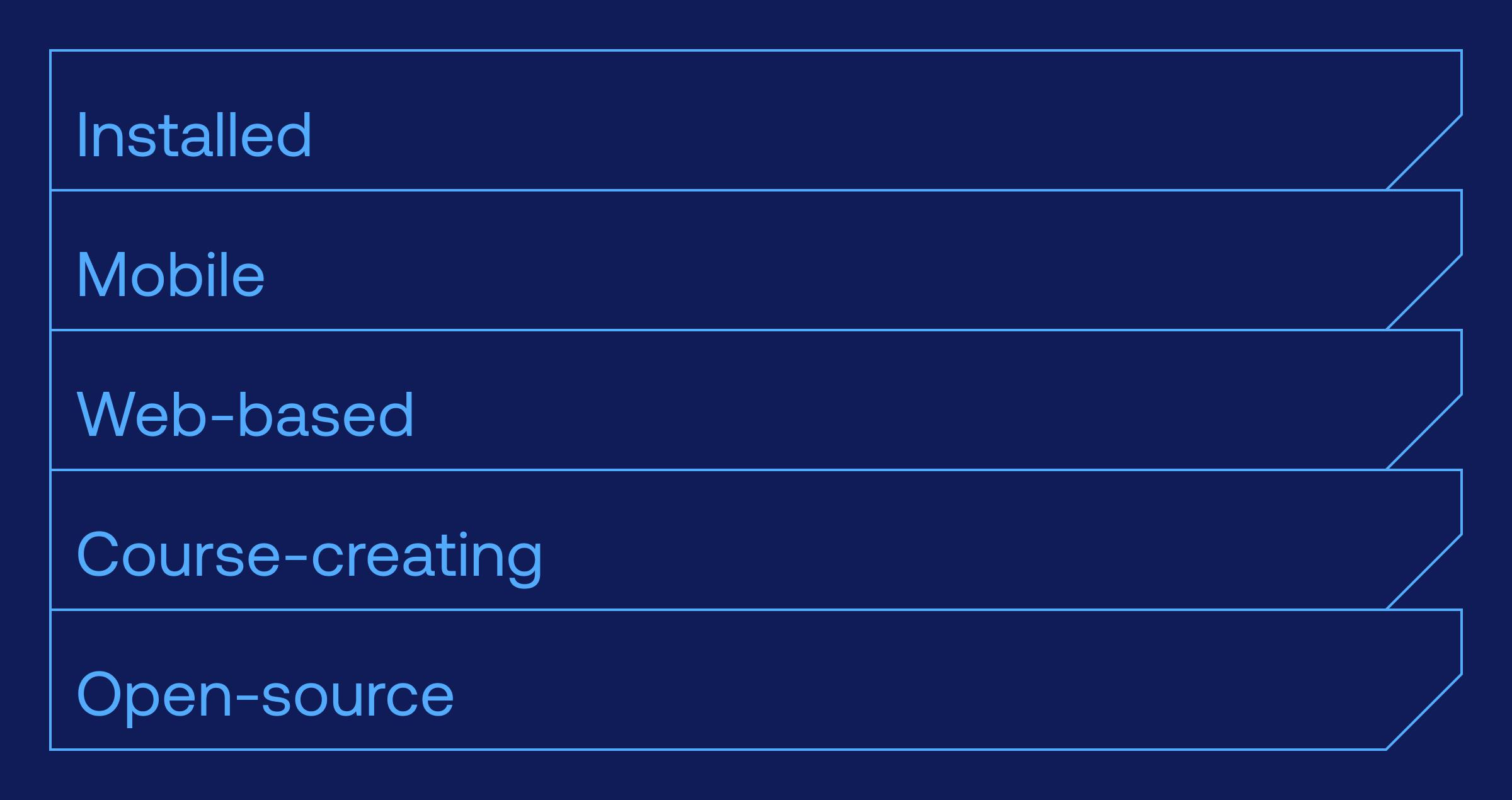
Learning management systems 101

Long ago, in the innocent, free-spirited year of 2019, we'd forgive you for not knowing what a learning management system (LMS) was. You probably didn't know a lot of things back then, like how to make sourdough bread or share your screen. While COVID-19 prompted a seismic overnight adoption of LMS for remote learning, this edtech has been on the rise for years — and is finding its place in sectors way beyond classrooms.
The global LMS market is predicted to grow at a CAGR of 19.2% from 2021 to 2028, totaling nearly $51 billion by 2028. That poises this technology to facilitate learning and training far into the future and turbocharges an education trend already well underway.
It's not hard to see why. In our experience with the technology, LMS is a gold-star solution for e-learning software development, providing benefits to teachers and students, businesses and employees.
Key features of a powerful LMS include:

These days, there are many LMS options on the market, from installed to web-based and mobile-first to content-creating. With so many learning management systems types, choosing the right one for your business will largely depend on your needs and capabilities.
Start by asking yourself these questions:
- Do we have the resources to dedicate to IT infrastructure for our LMS, or would we benefit from an auto-scaling SaaS (Software as a Service) LMS that leverages the cloud?
- Are we working with a distributed class or team that can take advantage of mobile features and add-ons?
- How much customization do we need?
Education
You know we have to start here. Learning management systems offer many upsides for traditional and continuing education institutions; that’s why they're already widely used in both. An LMS makes it easy for educators to implement a blended learning strategy, employing various teaching methods and styles, plus gamification features such as badges and leaderboards that increase student engagement.
Learning management systems also support other edtech solutions, like, say, Learning.com or Examkrackers. (Both Vention clients — not bragging, just facts!) This multimodal approach to education makes learning more flexible and accessible than chalkboards and lectures.
Employee training
"Learning is rapidly becoming a critical part of many people's daily work," according to a 2022 report by LinkedIn. By tailoring learning and development platforms to the varied needs of your employees, an LMS can make new employee onboarding and upskill training for existing staff much more efficient.
An LMS can also allow employees to tailor their own learning programs: They can choose what they want to learn, the device they want to use (desktop or mobile), and the rate at which they want to learn (all at once or in chunks).
By letting employees take courses at their own pace, an LMS makes for a more productive and satisfying learning experience and can boost the confidence of learners. Voxy, a platform that powers English language learning, demonstrates the benefits of flexible training options: Learners can follow personalized lessons, take live courses, and track their progress across devices. (But we might be a bit biased: Voxy is also a Vention client, and we've been busily migrating its platform to Python as its customer base grows.)

Compliance training
With LMS-supported compliance training, employees can easily keep up with industry-specific policies and regulations. New compliance standards can be added to e-learning software as soon as they arise, and employees can be notified when they need to take a new or updated training course.
Product training
Training your sales and marketing staff on your products/services with an LMS allows you to maintain their knowledge of the products/services you're delivering or educate them on new products or services as soon as they're released.
Customer training
With an LMS used for customer education, you can teach your customers about your products' capabilities, as well as coach them on how to use them in the most effective way — always a plus when it comes to customer engagement and loyalty.
Partner training
LMS-enabled partner training makes it easy to deliver best practices to franchise owners, resellers, and anyone else marketing or selling your services.
Some of the most common and popular types of LMS on the market today include:

Installed LMS
OK, OK, so maybe an installed LMS (which means it's locally hosted and actually downloaded onto users' computers) isn't the spry, nimble tech we know and love today, but we wouldn't mention it if it didn't have some major upsides. Yes, it comes with high costs for on-premise installation, and yes, you'll likely need an in-house IT department to handle ongoing maintenance and upgrades.
However, for the right company with the right resources, an installed LMS can be a game-changer. Paradiso, a leading on-premise LMS vendor, maintains that an installed platform empowers greater customization, tighter security, and faster deployment than other types of LMS. Sure, an installed platform is the old dog in the LMS fight, but it can still learn some new tricks.
Web-based LMS
Web-based LMS is a SaaS product hosted on the LMS vendor's servers. SaaS LMS offers greater flexibility than an installed learning management system, allowing you to tap into the robust scalability and resources of your vendor. With nearly 40% of the market, the web-based Google Classroom is at the forefront of this category and the whole LMS ecosystem.
If your company doesn't have the resources or bandwidth for system maintenance, this type of LMS helps to focus your energy on other areas. With the cloud, SaaS LMS delivers a streamlined process for scaling your e-learning up or down as needed — with none of the IT headaches.
Open-source LMS
As the name suggests, this software has an open source code, making it easy to customize and align your learning management system for specific business needs. Even better, many options on the market — including Moodle, the most popular open-source LMS — are free to use.
Unfortunately, that low barrier to entry comes with a price. LMS with an open source code puts the onus for custom features and maintenance on you. Not only will you need some technical knowledge to really maximize this type of LMS, you'll also be responsible for bug fixes, upgrades, and ongoing maintenance.
Mobile LMS
Mobile LMS can be accessed from the trainees' mobile devices, making e-learning strategies such as microtraining and learning on the go possible. Mobile apps empower learning at home as well as in the classroom. For example, one of our LMS solutions made for Kids Academy is a mobile app for early childhood e-learning. Its AI-powered software has multiple sets of training tasks that increase in complexity along with student progress and can also analyze and evaluate students' performance.
Course-creating LMS
Not all learning management systems allow you to create courses. That's not necessarily a downside. If your business is only planning to use an LMS for user management or ready-made trainings, there's no reason why you should care about tools to build custom courses.
But for learning that's digitally-enabled yet traditionally-minded, course-creating LMS is the way to go. Also known as a learning content management system (LCMS), a course-creating LMS is primarily used to create, customize, and store e-learning content, allowing courses to be modified for even individual learners. Xyleme is an example of this type of LMS — a solution that's geared more towards content creators than learners.
With learning management systems, the business advantages lie in the efficiencies delivered by the management piece: They can enable custom e-learning course development, but the bulk of the value unlocked by LMS comes from how they deploy and scale learning to users, making training and teaching more accessible and easier than ever in the process.





